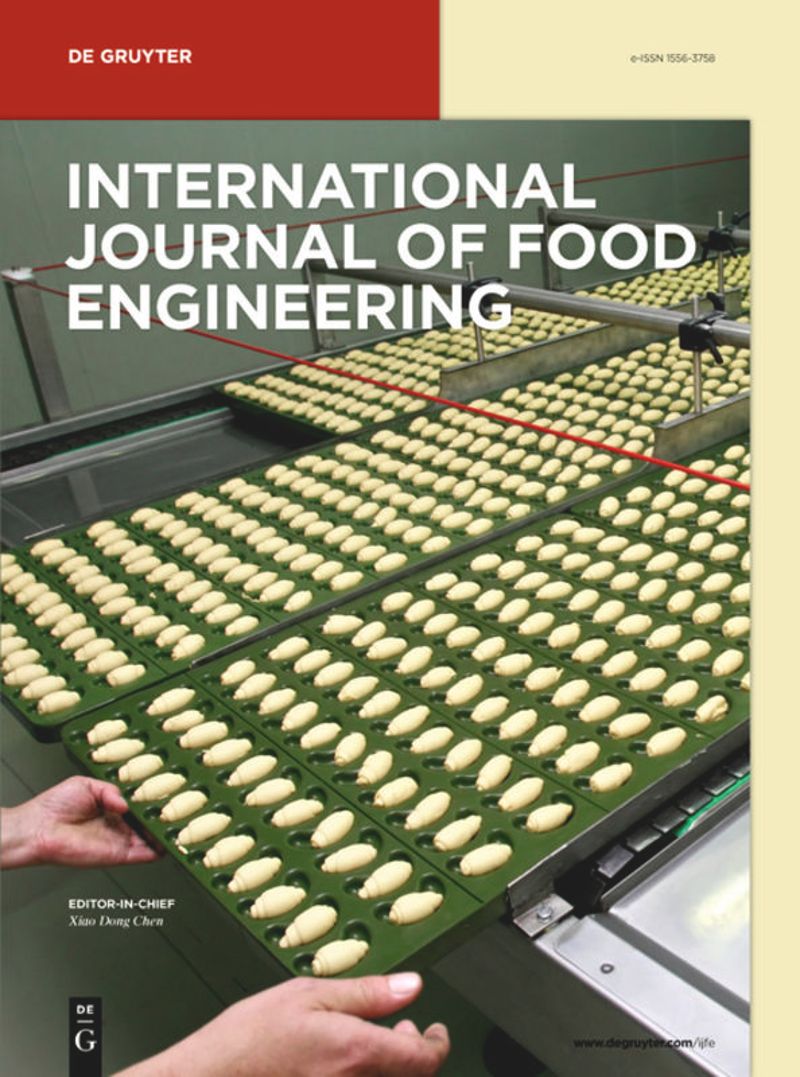Drying Kinetics of American Ginseng Slices in Thin-layer Air Impingement Dryer
IF 1.4
4区 农林科学
引用次数: 32
Abstract
Thin-layer air impingement drying kinetics of American ginseng slices were investigated under different drying temperatures (35, 40, 45, 50, 55, 60, and 65°C), air velocities (3, 6, 9, and 12 m/s), and sample thicknesses (1, 2, 3, and 4 mm). Results indicated that the drying time is more significantly affected by drying temperature followed by sample thickness and air velocity. Drying rate curves illustrated that the whole drying process happened in the falling rate period. Additionally, from initial drying to the moisture content of about 0.5 kg/kg, the drying rate increased with the increase of drying temperature and air velocity or decreased with the increase of sample thickness. The moisture effective diffusivity (西洋参片在薄层空气撞击式干燥机中的干燥动力学研究
研究了不同干燥温度(35、40、45、50、55、60和65℃)、风速(3、6、9和12 m/s)和样品厚度(1、2、3和4 mm)下西洋参薄片的薄层空气冲击干燥动力学。结果表明,干燥温度对干燥时间的影响最为显著,其次是样品厚度和风速。干燥速率曲线表明,整个干燥过程发生在速率下降阶段。从初始干燥到含水率约0.5 kg/kg时,干燥速率随干燥温度和风速的升高而增大,随样品厚度的增加而减小。在考虑收缩和忽略收缩的情况下,确定了有效扩散系数。经阿伦尼乌斯关系测定,西洋参片的干燥活化能为46.64 kJ/mol。比较了西洋参片与其他生物材料的水分有效扩散率和干燥活化能,并对相关问题进行了讨论。本文的研究成果对空气冲击干燥系统的设计、西洋参片的质量评价和节能具有一定的指导意义。
本文章由计算机程序翻译,如有差异,请以英文原文为准。
求助全文
约1分钟内获得全文
求助全文
来源期刊
CiteScore
3.20
自引率
0.00%
发文量
52
审稿时长
3.8 months
期刊介绍:
International Journal of Food Engineering is devoted to engineering disciplines related to processing foods. The areas of interest include heat, mass transfer and fluid flow in food processing; food microstructure development and characterization; application of artificial intelligence in food engineering research and in industry; food biotechnology; and mathematical modeling and software development for food processing purposes. Authors and editors come from top engineering programs around the world: the U.S., Canada, the U.K., and Western Europe, but also South America, Asia, Africa, and the Middle East.

 求助内容:
求助内容: 应助结果提醒方式:
应助结果提醒方式:


